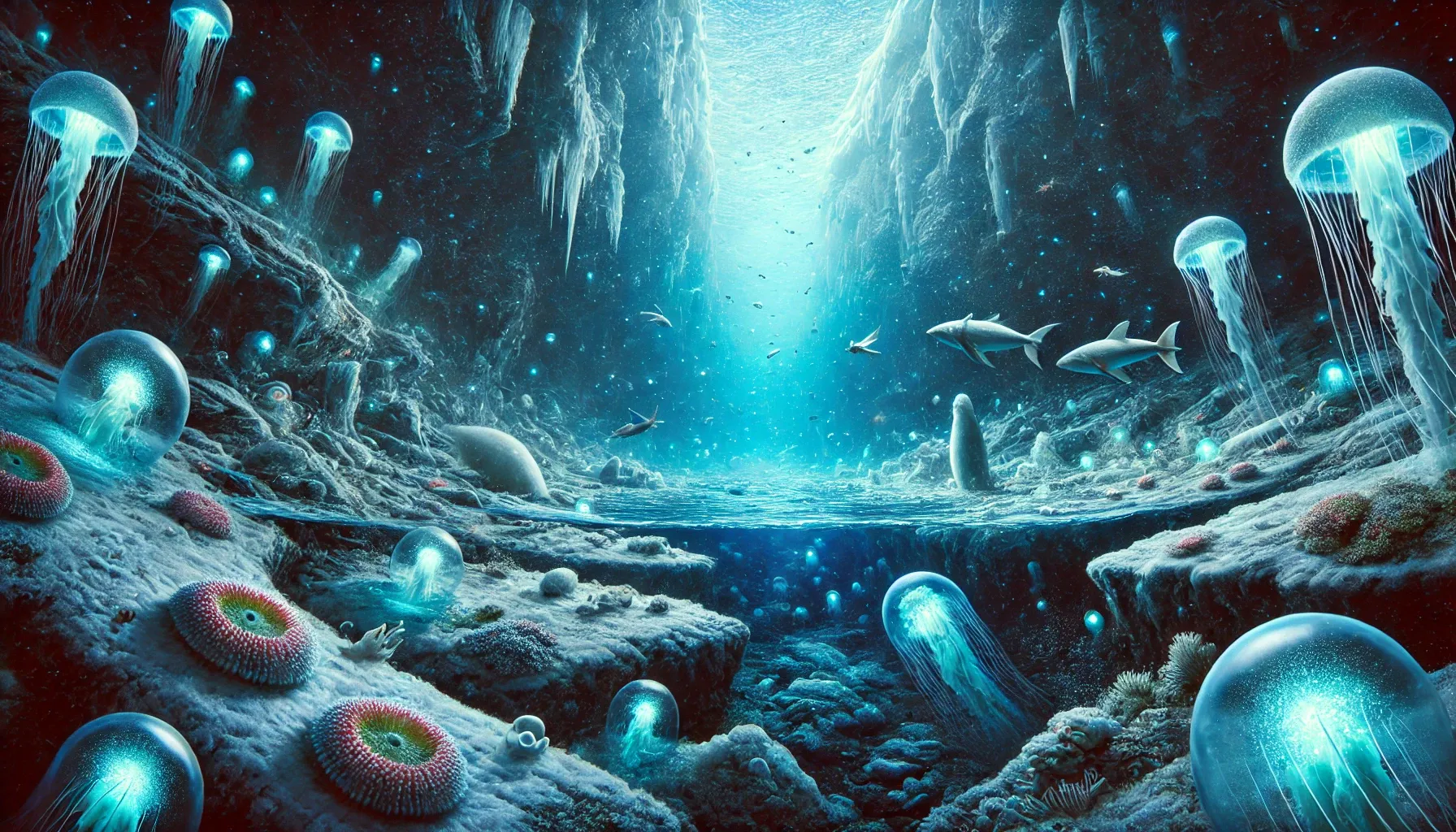UPSC
Indian Express Concise
Life Beneath Antarctica’s Ice: A Scientific Surprise
Last Updated
22nd March, 2025
Date Published
22nd March, 2025
Share This Post With Someone

Context:
This analysis details the unexpected discovery of diverse marine life under the Antarctic ice shelf during a 2022 Challenger 150 mission, part of UNESCO’s deep-sea research initiative. Announced on March 20, 2025, the findings challenge assumptions about life in extreme conditions, offering insights into ecological resilience and climate dynamics as of March 22, 2025.
- Discovery Overview: In 2022, the Challenger 150 mission found 70+ species—corals, sponges, fish, crustaceans—thriving under the Larsen Ice Shelf, 450-600 meters below the surface, announced on March 20, 2025.
- Climatic Conditions: The habitat features total darkness, temperatures of -2°C to -1°C, high pressure (up to 60 atmospheres), and nutrient scarcity, cut off from sunlight for centuries under 150-meter-thick ice.
- Geographic Location: Located beneath the Larsen Ice Shelf in East Antarctica’s Weddell Sea, a floating ice extension covering vast ocean expanses, roughly 1,500 km from India’s Maitri station.
- Possibility of Life - Surprise Factor: Scientists were stunned as deep-sea life typically relies on surface nutrients from photosynthesis; this ecosystem’s isolation suggested alternative sustenance mechanisms.
- Nutrient Hypothesis: Ocean currents or glacial meltwater likely transport microscopic algae and organic matter, sustaining filter-feeders like sponges and corals despite no sunlight penetration.
- Species Diversity: Included mobile predators (fish, crustaceans) and stationary filter-feeders (sponges, corals), with growth rates matching open-water Antarctic species, defying expectations of sparse life.
- Historical Context: Life beneath ice shelves was first noted in 2021 under the Filchner-Ronne Shelf; the 2022 find expands this, revealing richer biodiversity over larger areas.
- Scientific Implications: Suggests life can adapt to extreme isolation, possibly via chemosynthesis or lateral nutrient flow, reshaping views on polar ecosystems’ resilience.
- Climate Change Link: Ice shelf thinning from warming (e.g., 2022 Conger Shelf collapse) exposes these ecosystems, raising concerns about their survival as Antarctica’s climate shifts.
- Research Significance: Highlights the need to study these habitats before further ice loss, offering clues to life’s limits and potential parallels on icy moons like Europa.
Key Terms:
- Larsen Ice Shelf: Floating ice platform in East Antarctica’s Weddell Sea.
- Challenger 150: UNESCO-backed initiative for deep-sea exploration.
- Filter-Feeders: Organisms (e.g., sponges) feeding on particles in water currents.
- Chemosynthesis: Energy production from chemicals, not sunlight, possibly sustaining life here.
- Weddell Sea: Southern Ocean region hosting diverse Antarctic ecosystems.
- Glacial Meltwater: Water from melting ice, a potential nutrient source.
- Ice Shelf: Thick, floating ice extending from land into the ocean.
Link To The Original Article – https://indianexpress.com/article/explained/explained-sci-tech/why-scientists-were-surprised-to-find-life-under-antarctic-ice-shelf-9899234/